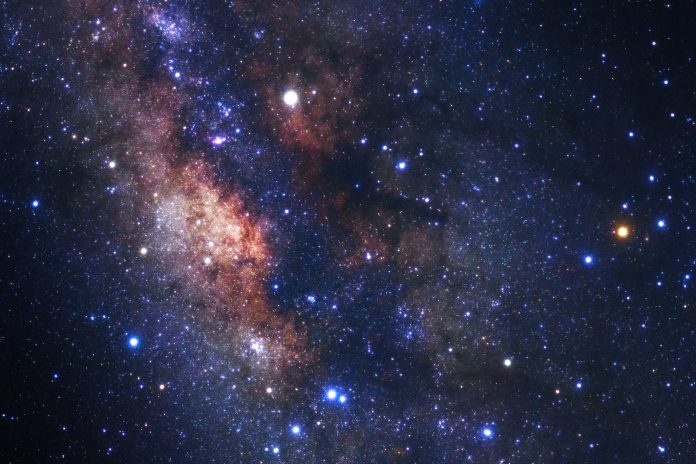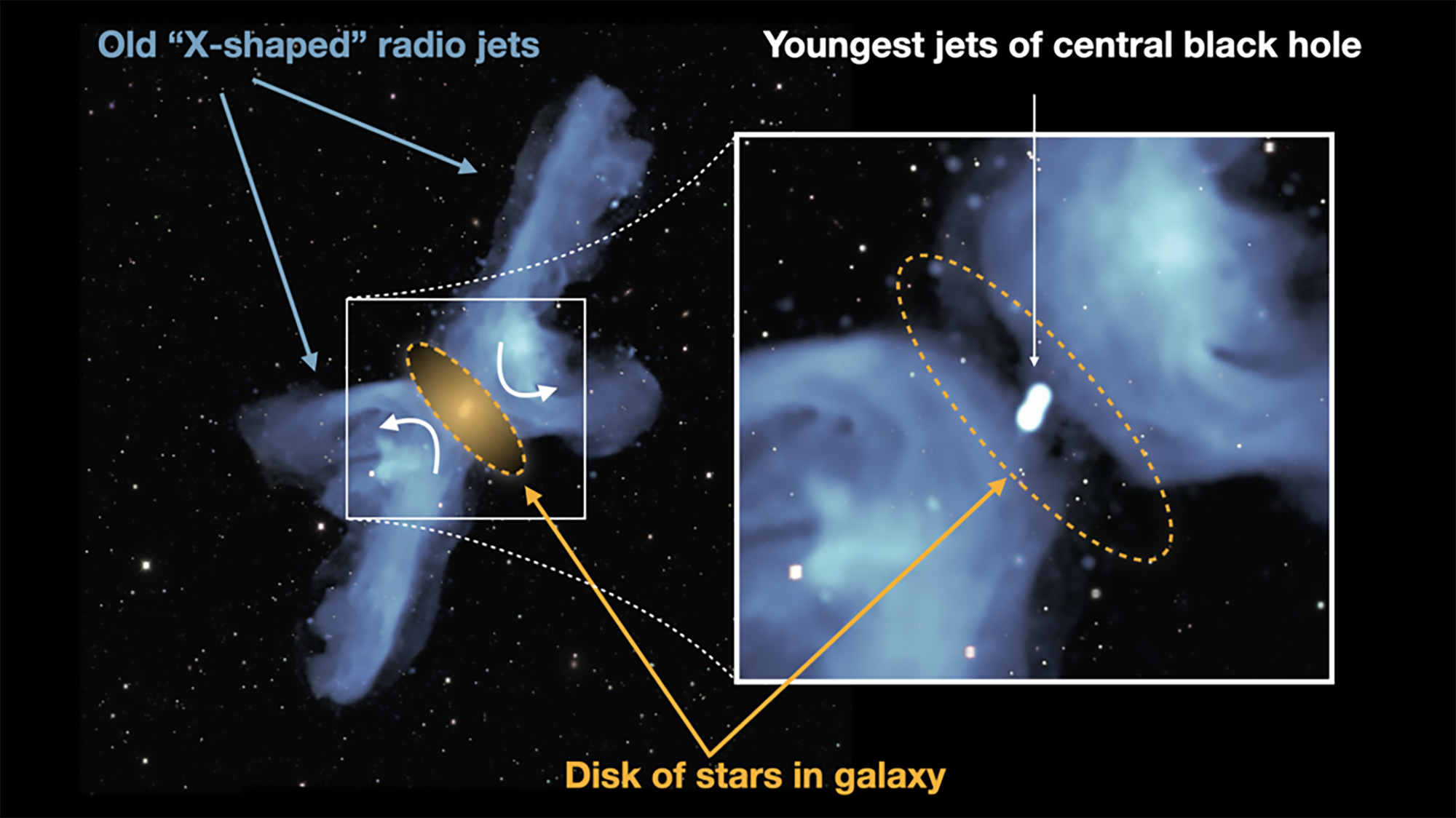Dr Thomas W. Jones, Professor at the University of Minnesota, walks us through his research concerning illuminating cosmological signposts with cosmic rays
Our expanding, evolving universe
We live in a rapidly expanding universe some 14 billion years since its birth in the “Big Bang” explosion. The nature of this universal expansion, what structures formed within it and how they changed over time are basic to the study of “Cosmology”. The most distant features in the universe are multiple billions of light-years away, and because light signals travel one light-year in a year, we actually see such features as they were when the universe was billions of years younger. So, studies of the distant universe can reveal important signposts in time. Put together, such signposts can paint a clear map of cosmic history and the processes controlling it.
Formation of revealing cosmic signposts
On its largest scales, the universe appears the same everywhere we look, confirming the “Cosmological Principle” hypothesis that underlies how scientists approach most studies of cosmology. On the other hand, “zooming in” to less-grand scales, the universe appears “clumpy” and “complex”. Measuring and understanding the character and distribution of these features are key missions. Such clumping reflects that every bit of matter in the universe attracts every other bit of matter by gravity and that, immediately following the Big Bang, the universe was not perfectly smooth. Some regions started out slightly denser than others. Over time, gravity squeezed the slightly denser regions into “clumps”. Sometimes adjacent clumps collided and then merged. The universe evolved this way to become much “clumpier”.
Our home Milky Way Galaxy and its “galaxy family”, including the neighbouring “Andromeda Galaxy”, about 2.5 million light-years away are familiar examples of cosmic clumps formed this way. At the same time, the cosmic time map was greatly enriched by added features including the fact that along with the initial mass density fluctuations were fluctuations in temperature and random relative motions that “stirred things up”. Some regions became more susceptible to clumping, others less so. These details, plus more subtle cosmological physics caused the actual evolving time-map patterns to become very complex. Still, once we understand the patterns, we can use them to map their formation histories.
In general terms, the matter in the universe evolved into a “spider-web” structure, with high mass concentrations spaced apart today by a hundred million light-years or so and strung together by less massive “filaments”. While this pattern started when the universe was a fraction of its current age and size, the most massive clumps, each containing, perhaps thousands of galaxies clumped into so-called galaxy clusters developed relatively recently and are still growing in mass. These components provide essential signposts we need to properly map out the cosmological history along with the underlying physical processes that defined it.
Cosmic rays & their emissions as signpost beacons
Because human eyes are sensitive only to visible light and galaxies shine predominantly by visible light, we naturally focus on maps illuminated by galaxy signposts. However, although galaxies are distributed roughly like cosmic matter generally, only a small fraction of the matter in the universe is inside galaxies, and many important structures develop outside galaxies. So, by themselves, galaxies cannot illuminate the full cosmic history map. Thankfully, “Cosmic Rays”, very energetic charged elementary particles, and especially Cosmic Ray Electrons provide an alternate means to illuminate important signposts that light from galaxies often cannot do. Although Cosmic Ray Electrons represent a tiny fraction of the matter in the universe, and they may mostly originate from galaxies, they are commonly expelled far from their originating galaxies and ultimately get mixed widely into the broad extragalactic medium, well beyond galaxies and even beyond individual clusters of galaxies. Such Cosmic Ray Electrons reflect the universal distribution of matter.
At least as important to their ability to serve as beacons to illuminate the cosmological time map, these Cosmic Ray Electrons reveal their presence especially where they are “excited” and/or concentrated by cosmic “formation events” including collisions between major mass clumps such as galaxy clusters or by matter draining from connecting cosmic filaments onto galaxy clusters, or even “stirred” on larger scales by galaxy driven events. Potential signpost signals come from these Cosmic Ray Electrons in multiple forms. But, probably the most useful to their roles in mapping out cosmic structure developments are their radio emissions by the synchrotron process coming from their interactions with magnetic fields embedded in the extragalactic medium.
During events such as collisions of galaxy clusters, streams of matter raining in from cosmic filaments or even events involving fast matter outflows from interacting individual galaxies, those embedded magnetic fields can be greatly enhanced in patterned ways that reflect details of the events. Radio emissions from embedded Cosmic Ray Electrons then preferentially “light up” those events, illuminating in detail their characteristic behaviours. That is how they become “cosmic signpost beacons.” The obvious challenges are to find and then interpret these beacons so that they truly do become signposts to help map the cosmic time history and reveal the physics underneath.
Detecting and reading previously elusive cosmic ray signpost emissions
We are entering a new, exciting era of radio astronomy that will be highlighted by the ultra-powerful “Square Kilometer Array” (SKA) radio telescope soon to be built in Australia and South Africa. This new tool will revolutionise our access to important cosmic evolution signposts. Even now SKA radio telescope “precursors” such as the Low Frequency ARray (LOFAR) in Europe, the MeerKAT radio telescope in South Africa and the Australian Square Kilometre Array Pathfinder (ASKAP) telescope in Australia, are developing and testing novel technologies to be incorporated into the SKA telescope. These precursor telescopes are even now revealing important radio synchrotron signposts of cosmic evolution that were previously invisible and often not predicted.
As we successfully map out such Cosmic-Ray-illuminated signposts in detail using these revolutionary radio telescopes, the equally important challenge is to translate the information they are signalling and use it to build a clear physical map of the cosmic structure history that they represent. Dr Tom Jones at the University of Minnesota, along with his students and collaborators in the U.S., Europe and Asia are applying innovative and powerful computational tools they have developed in their research over the past several years to simulate accurate physical models and signpost emissions of the classes of cosmic features outlined here. Those are already beginning to draw connections between some of the previously unknown radio signposts and the cosmological history that lies underneath. Application of these tools as the SKA comes online should open new windows to read the exciting cosmic signposts.
Please note: This is a commercial profile
© 2019. This work is licensed under CC-BY-NC-ND.












